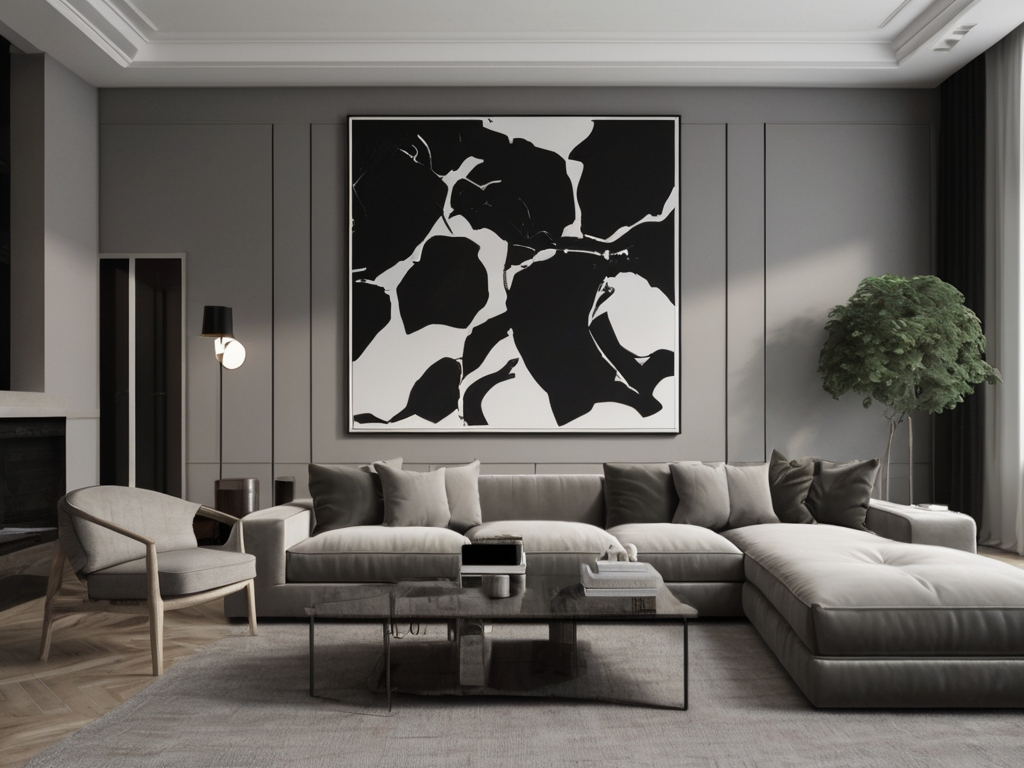
Monochromatic living room ideas are the secret to creating a stylish, cohesive, and sophisticated space that feels both calming and contemporary. Using a single color as the foundation of your room’s palette may sound limiting, but it’s actually an opportunity to explore creativity in texture, tone, and mood.
What Is a Monochromatic Living Room?
A monochromatic living room is designed using varying shades, tints, and tones of a single base color. Whether you’re drawn to cool blues, warm neutrals, or dramatic blacks, the monochromatic approach provides a sense of visual harmony and elegance without becoming boring or sterile.
Why Choose a Monochromatic Color Scheme?
There’s a reason why so many interior designers swear by this approach. A monochromatic living room offers:
- Visual Consistency: No clashing colors means a smoother, more elegant aesthetic.
- Minimalist Appeal: Perfect for lovers of clean, modern design.
- Easy to Style: With one main color, adding decor becomes simpler and more cohesive.
- Focus on Texture: Instead of competing hues, your eye is drawn to materials and forms.
How to Design a Monochromatic Living Room
Now for the fun part—bringing your monochromatic living room ideas to life! Here’s how to do it right.
1. Choose Your Base Color Wisely
This is the foundation of your entire design. Popular choices include:
- Gray: Perfect for a sleek, modern look.
- Beige: A warm, timeless classic for a cozy ambiance.
- Navy: Bold and sophisticated without being overwhelming.
- Black: Dramatic, high-contrast, and incredibly chic.
- White: Bright, open, and endlessly versatile.
2. Use Tints, Shades, and Tones
Once you’ve chosen your color, use different versions of it to avoid flatness. Mix lighter tints, deeper shades, and various tones to add dimension and intrigue.
3. Layer in Textures
Without different colors to draw attention, your room will need texture to provide depth. Think velvet sofas, linen curtains, jute rugs, and wooden tables—all in the same color family.
4. Mix Materials
Contrast smooth and rough finishes to create a tactile experience. Matte walls paired with glossy ceramics or brushed metals can give your monochrome space an editorial-quality polish.
5. Add Pattern Sparingly
Even in a monochromatic space, you can incorporate patterns—but keep them subtle. Think geometric throw pillows or tone-on-tone wallpaper.
6. Play with Light
Lighting plays a massive role in how color is perceived. Use warm bulbs to soften cooler palettes or natural daylight to bring out your room’s subtle contrasts.
Best Monochromatic Living Room Color Ideas
Soothing Neutrals
Layer cream, ivory, sand, and taupe for a soft and serene atmosphere. Perfect for open-concept spaces or family living rooms that need to feel restful.
Chic Grayscale
Pair charcoal walls with dove gray furniture and black metal accents. Add faux fur or chunky knits to keep it from feeling cold.
Moody Blues
From deep navy to powder blue, this palette is classic and incredibly calming. Ideal for urban apartments or anyone who loves a coastal vibe.
Bold in Black
Go full editorial with an all-black room. Use various finishes—leather, matte paint, lacquer—to keep it visually rich. Add strategic lighting to highlight textures.
Earthy Greens
Olive, sage, moss—these tones bring the outdoors in and create a grounded, natural feel. Add terracotta pots and wooden decor for even more warmth.
Common Mistakes to Avoid
- Too Flat: Not using enough texture or variety in shades will make the room look dull.
- Lack of Accent: You can still use metallics or small wood accents to break monotony.
- Poor Lighting: This style needs layered lighting to highlight its subtle contrasts.
Final Thoughts
Embracing monochromatic living room ideas isn’t about being boring—it’s about creating balance, sophistication, and depth in a way that feels both curated and comfortable. Whether you’re going for dramatic contrast or a soft, tonal look, a monochrome space gives you the chance to express style in its most distilled form.
FAQ
What colors work best for a monochromatic living room?
Neutrals like gray, beige, and white are popular for their flexibility, while blues and greens add personality and calmness.
Can I use accents in a monochromatic room?
Yes! Metallics, natural wood, or even subtle patterns in the same hue can add depth and keep the room from feeling flat.
Is a monochromatic living room good for small spaces?
Absolutely. The continuity of color can make a small room appear larger and more cohesive.
Do I need to stick to one exact shade?
No, you can (and should) use a variety of tints, shades, and tones of your chosen base color.